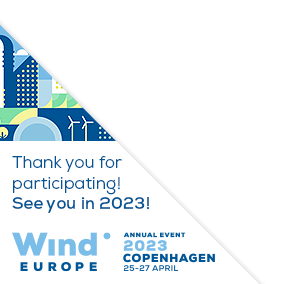Posters
Siblings:
ProceedingsProgrammeSpeakersPostersContent PartnersGlobal Markets TheatreWindTalks for InnovationProgramme Committee & Abstract ReviewersSpeaker's DashboardCome meet the poster presenters to ask them questions and discuss their work
Check the programme for our poster viewing moments. For more details on each poster, click on the poster titles to read the abstract. On Wednesday, 6 April at 15:30-16:15, join us on Level 3 of the Conference area for the Poster Awards!

PO259: Beyond climatology: Seasonal forecast for 12-months-ahead wind speed anomalies
Albert Bosch, Wind Meteorologist, VORTEX
Abstract
Climatology is commonly used in the wind industry to compute production for the following year. Here, a new methodology to improve on climatology for up to 12-month predictions is presented for wind speed anomalies. This methodology for seasonal forecasting combines 30-year historical time series and seasonal climate modelswith statistical methods and machine learning techniques. It has been found that using monthly climatology averages is not the best approach for anomalous months and therefore, some annual predictions must be updated every month to fulfil predicted budgets. For this new method, no real measurements are necessary. A modelled 30-year time series from the WRF (Weather Research and Forecast) model at 3km resolution prepared by Vortex is used as a reference for the climate period 1990-2021. Seasonal climate models from Copernicus Climate Change Service (C3S) are used for projections up to 6 months ahead. Seasonal models are from ECMWF(European Centre for Medium-Range Weather Forecasts), The Met Office, Météo-France, the German Weather Service (Deutscher Wetterdienst, DWD), the Euro-Mediterranean Center on Climate Change (Centro Euro-Mediterraneo sui Cambiamenti Climatici, CMCC), the US National Weather Service's NCEP (National Centers for Environmental Prediction) and Japan Meteorological Agency (JMA). All this information is analyzed on a site-specific basis using intelligent analysis to evaluate the best performance for each exact location. Seasonal single and post-processed models, multi-models, statistical projections, persistence and climatology are all studied to provide the best anomaly prediction.










Follow the event on: